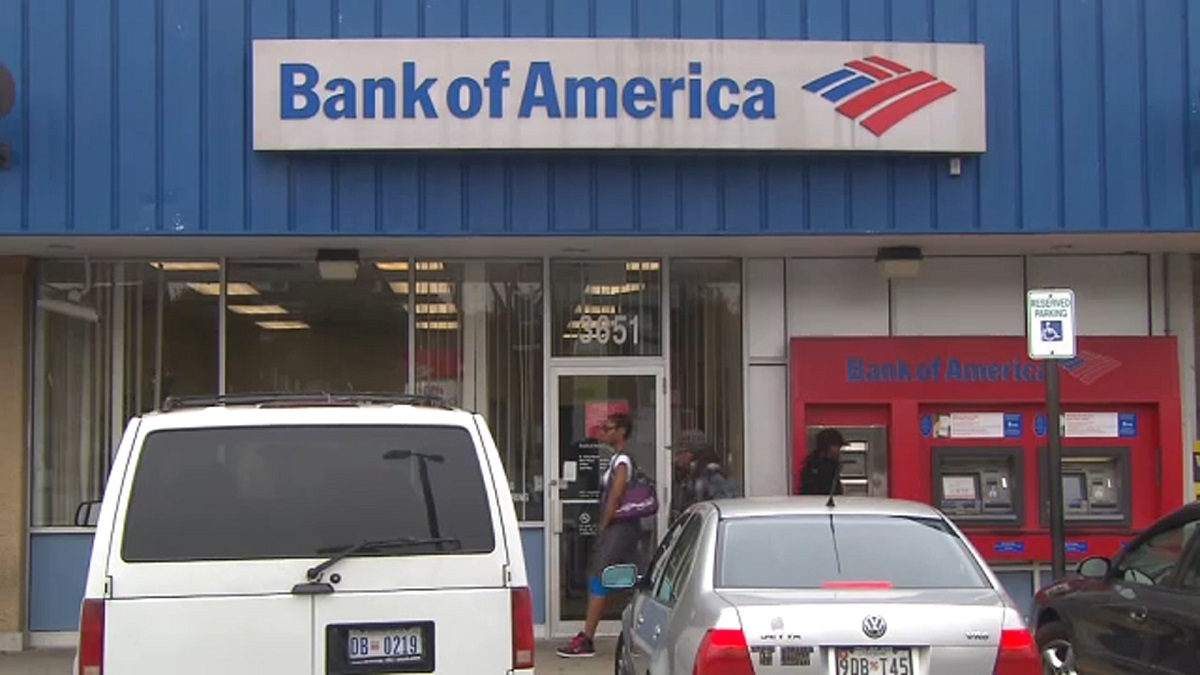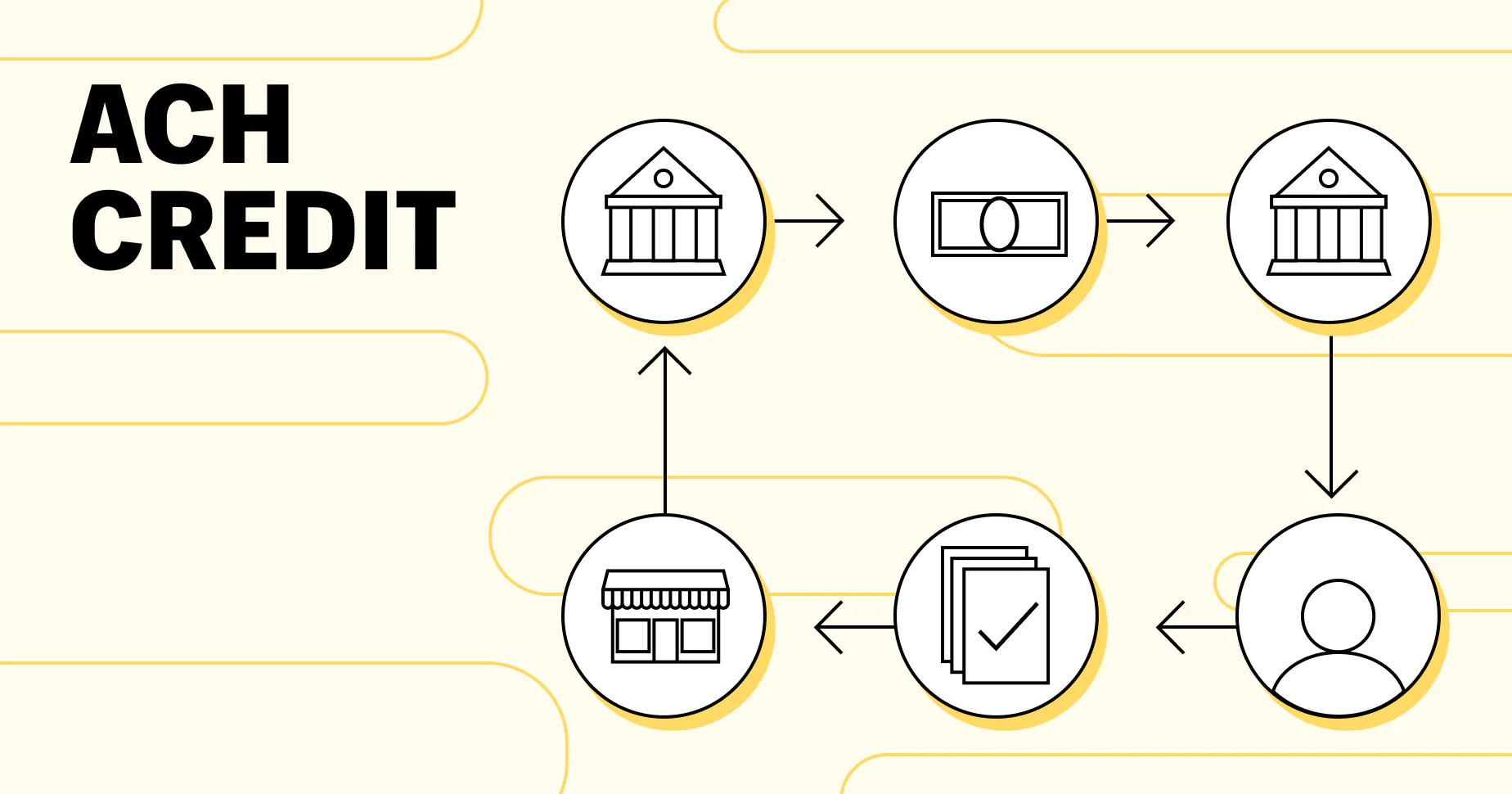Introduction
A clearing house plays a crucial role in the banking industry, serving as a central hub for processing and settling financial transactions. It acts as an intermediary between buyers and sellers, ensuring the smooth transfer of funds and mitigating counterparty risk. Clearing houses have a long history and have evolved to become an integral part of the global financial system.
A clearing house acts as a trusted third party that guarantees the completion of financial transactions. It provides a secure platform for banks, financial institutions, and corporations to clear and settle trades, reducing settlement risks and facilitating efficient payment processing.
Nowadays, clearing houses have become even more essential in the era of electronic trading and global financial markets. With the increasing complexity and volume of financial transactions, the role of clearing houses has expanded to include services such as risk management, collateral management, and regulatory compliance.
This article provides a comprehensive overview of clearing houses in banking, exploring their history, functions, participants, benefits, and associated risks. By understanding the vital role they play in the financial system, individuals can gain insights into the mechanisms that ensure the stability and efficiency of the banking industry.
What Is a Clearing House?
A clearing house is a financial institution that acts as an intermediary in the settlement of financial transactions. It serves as a central platform where trades, especially in the securities and derivatives markets, are matched and cleared. The primary function of a clearing house is to facilitate the smooth transfer of funds, securities, or other financial instruments between buyers and sellers.
When two parties enter into a trade, the clearing house steps in to manage the risks associated with the transaction. It ensures that both the buyer and the seller fulfill their obligations by guaranteeing the completion of the trade. By assuming the role of a counterparty to each trade, the clearing house reduces the risk of default and enhances market stability.
One of the key roles of a clearing house is to perform the process known as clearing. Clearing involves validating and finalizing trades, confirming the ownership of assets, and ensuring the accuracy of trade details. The clearing house also calculates the net positions of its participants, consolidating multiple trades and reducing the number of transactions that need to be settled.
After the clearing process, the clearing house moves on to settlement. Settlement involves the actual exchange of funds, securities, or other assets between the buyer and the seller. The clearing house acts as the central counterparty, ensuring that the buyer receives the securities or assets and the seller receives the agreed-upon funds.
In addition to facilitating trade settlement, clearing houses also play a critical role in risk management. They require participants to post collateral, typically in the form of cash or securities, to mitigate the risk of default. By doing so, clearing houses help protect the financial system from the potential impacts of a participant failing to fulfill their obligations.
Overall, a clearing house acts as a vital infrastructure in the banking industry, providing a centralized and efficient mechanism for settling financial transactions. Its role in mitigating risks, ensuring market integrity, and enhancing transparency makes it an essential component of the global financial system.
History of Clearing Houses
The origins of clearing houses can be traced back to the early days of stock exchanges in Europe. As financial markets grew in size and complexity, the need for a centralized entity to facilitate the settlement of trades and reduce counterparty risk became apparent.
One of the earliest examples of a clearing house can be found in Amsterdam in the 17th century. The Amsterdam Stock Exchange established a clearing house in 1608 to facilitate the trading of shares of the Dutch East India Company. This was a significant development, as it introduced a centralized platform where traders could securely clear and settle their transactions.
Clearing houses continued to evolve over the centuries, adapting to the changing landscape of the financial industry. In the 19th century, with the rise of railroad companies and the expansion of stock markets in the United States, clearing houses became more prevalent. The New York Clearing House, founded in 1853, was one of the first clearing houses in the United States and played a critical role in facilitating the settlement of trades among member banks.
With the growing complexity of financial instruments and the globalization of markets, the role of clearing houses expanded further. In the 20th century, clearing houses began to provide services beyond trade settlement. They started acting as central counterparties, assuming the risk of each trade and providing guarantees of completion.
The adoption of electronic trading and advancements in technology revolutionized the operations of clearing houses. Automated systems enabled faster and more efficient trade processing, reducing the time and cost associated with clearing and settlement. This resulted in increased transparency, improved risk management, and enhanced market integrity.
Today, clearing houses play a critical role in not only stock exchanges but also other financial markets, including derivatives, commodities, and foreign exchange. They have become integral components of the global financial infrastructure, providing essential services to ensure the smooth functioning of the financial system.
Overall, the history of clearing houses demonstrates the evolution and adaptation of these institutions to meet the changing needs of the financial industry. From their humble beginnings in the 17th century to their current sophisticated operations, clearing houses have become indispensable in facilitating secure and efficient trade settlement.
Why Are Clearing Houses Important in Banking?
Clearing houses play a crucial role in the banking industry, providing several key benefits that contribute to the stability and efficiency of financial markets. Their importance can be attributed to the following factors:
First, clearing houses help mitigate counterparty risk. By acting as a central counterparty to each trade, clearing houses ensure that both buyers and sellers fulfill their obligations. This reduces the risk of default and enhances market confidence, as participants know that the clearing house guarantees the completion of transactions.
Second, clearing houses promote transparency in financial markets. They provide a centralized platform where trade details are verified, consolidated, and made available to market participants. This transparency increases the accessibility and integrity of market data, enabling better-informed investment decisions and reducing the potential for market manipulation.
Third, clearing houses enhance the efficiency of trade settlement. By netting off multiple trades between participants, clearing houses help streamline the settlement process. This reduces the number of individual transactions that need to be settled, saving time, cost, and operational complexity for market participants.
Fourth, clearing houses play a vital role in risk management. They implement stringent risk management practices and require participants to post collateral, such as cash or securities, as a safeguard against potential default. This helps protect the financial system from systemic risks and ensures the stability of the banking industry.
Fifth, clearing houses contribute to market liquidity. By providing a standardized and secure platform for trading and settlement, clearing houses increase market liquidity. This allows participants to buy and sell financial assets more easily, facilitating price discovery and ensuring that markets operate smoothly even during periods of market volatility.
Finally, clearing houses support regulatory compliance. They assist in ensuring that market participants adhere to regulatory requirements, such as reporting obligations and capital adequacy standards. Clearing houses play a pivotal role in advancing regulatory objectives and maintaining the integrity and stability of the financial system.
In summary, clearing houses are essential in banking due to their role in mitigating counterparty risk, promoting transparency, enhancing trade settlement efficiency, managing risk, providing market liquidity, and supporting regulatory compliance. Without clearing houses, financial markets would be more prone to disruptions and uncertainties, making them crucial components of the global banking industry.
How Clearing Houses Work
Clearing houses serve as intermediaries between buyers and sellers in financial transactions, ensuring the smooth transfer of funds, securities, or other financial instruments. They play a critical role in the banking industry by facilitating the clearing and settlement of trades. Here’s how clearing houses work:
1. Trade Matching: When a trade is executed between a buyer and a seller, the details of the transaction are reported to the clearing house. The clearing house verifies and matches the trade details, ensuring that both parties agree on the terms of the trade.
2. Clearing Process: After trade matching, the clearing house performs the clearing process. This involves consolidating trades, calculating the net positions of each participant, and determining the obligations of buyers and sellers. This netting process reduces the number of individual transactions that need to be settled.
3. Risk Management: Clearing houses implement robust risk management practices to mitigate the risk of default. They require participants to post collateral, such as cash or securities, as a safeguard against potential losses. By doing so, clearing houses protect the financial system by reducing the impact of default and ensuring the stability of the banking industry.
4. Settlement: Once the clearing process is complete, the clearing house moves on to the settlement phase. Settlement involves the actual exchange of funds, securities, or other assets between the buyer and the seller. The clearing house acts as the central counterparty, guaranteeing the completion of the trade and ensuring that both parties fulfill their obligations.
5. Margin Calls: Throughout the trading day, clearing houses may issue margin calls to participants if the value of their positions exceeds the predefined limits. Margin calls serve to maintain the integrity of the clearing house and protect against potential losses. Participants must respond to these calls by either providing additional collateral or closing positions to reduce risk exposure.
6. Record-Keeping and Reporting: Clearing houses maintain comprehensive records of all cleared trades and settlement activities. They provide various reports to market participants, regulators, and other stakeholders to ensure transparency and facilitate regulatory compliance.
Overall, through trade matching, clearing, risk management, settlement, margin calls, and record-keeping, clearing houses play a critical role in facilitating secure and efficient trade settlement. Their operations contribute to market integrity, risk mitigation, and the smooth functioning of the financial system.
Clearing House Functions
Clearing houses fulfill multiple functions in the banking industry, acting as centralized entities that facilitate the smooth settlement of financial transactions. They perform numerous tasks to ensure the efficient and secure clearing and settlement of trades. Here are the key functions of clearing houses:
1. Trade Verification and Matching: Clearing houses verify trade details and ensure that buyers and sellers agree on the terms of the trade. They match trades to confirm that the transaction is valid and accurately recorded.
2. Clearing and Netting: Clearing houses consolidate multiple trades between participants and calculate net positions. They offset opposing positions to reduce the number of transactions that need to be settled, saving time, cost, and operational complexity.
3. Risk Management: Clearing houses play a vital role in managing risk. They require participants to post collateral, such as cash or securities, to mitigate the risk of default. They monitor participants’ positions and issue margin calls when necessary.
4. Settlement: Clearing houses facilitate the settlement of trades by acting as central counterparties. They ensure the timely and accurate exchange of funds, securities, or other assets between buyers and sellers.
5. Collateral Management: Clearing houses oversee the management of collateral provided by participants. They accept, verify, and value collateral, ensuring that it meets the required standards. Clearing houses also handle margin calls and manage the return of collateral after trades are settled.
6. Trade Reporting: Clearing houses generate comprehensive reports on cleared trades and settlement activities. These reports provide market participants, regulators, and other stakeholders with transparency and help ensure compliance with regulatory requirements.
7. Risk Mitigation: Clearing houses act as a buffer against counterparty risk. By assuming the role of a central counterparty, they guarantee the completion of trades, reducing the risk of default and enhancing market stability.
8. Regulatory Compliance: Clearing houses support regulatory objectives by ensuring that market participants adhere to reporting obligations and capital adequacy standards. They implement compliance measures to maintain the integrity and stability of the financial system.
Overall, clearing houses perform critical functions in the banking industry, including trade verification and matching, clearing and netting, risk management, settlement, collateral management, trade reporting, risk mitigation, and regulatory compliance. These functions contribute to the efficiency, transparency, and stability of financial markets.
Clearing House Participants
Clearing houses have a wide range of participants that are involved in the clearing and settlement of financial transactions. These participants play different roles in the ecosystem of a clearing house. Here are the key types of clearing house participants:
1. Clearing Members: Clearing members are entities that have a direct relationship with the clearing house. They are typically banks, financial institutions, or brokerage firms that have met the eligibility criteria set by the clearing house. Clearing members are responsible for submitting trades, settling obligations, and fulfilling collateral requirements.
2. Trading Participants: Trading participants are individuals or entities that engage in trading activities on various financial markets. They execute trades and rely on the clearing house to facilitate the clearing and settlement process. Trading participants may include individual investors, institutional investors, corporations, and other financial market participants.
3. Clients of Clearing Members: Clearing members often have clients who trade through their platforms or services. These clients include individual investors, hedge funds, asset managers, pension funds, and other entities. Clients of clearing members benefit from the services provided by the clearing house, including trade clearing, risk management, and settlement.
4. Central Banks: Central banks may participate in clearing houses to ensure the stability and efficiency of the financial system. They may act as general clearing members or provide special services, such as liquidity support or regulatory oversight, to the clearing house and its participants.
5. Regulatory Authorities: Regulatory authorities, such as financial market regulators or central banking authorities, may participate in clearing houses to oversee compliance with regulations and ensure market integrity. They may have direct access to clearing house data and reports to monitor market activities and assess systemic risk.
6. Custodians and Depositories: Custodians and depositories are entities responsible for the safekeeping and administration of securities and other assets. They may participate in clearing houses to facilitate the settlement and custodial services associated with securities trades. They ensure the proper transfer and registration of securities between participants.
7. Market Data Providers: Clearing houses rely on market data providers to deliver real-time price information, trade data, and other relevant market data. Market data providers play a crucial role in enabling accurate trade matching, valuation of positions, risk calculations, and reporting within the clearing house.
Overall, the participants in a clearing house include clearing members, trading participants, clients of clearing members, central banks, regulatory authorities, custodians and depositories, and market data providers. The collaboration between these participants ensures the effective functioning of the clearing and settlement process, enhancing transparency, safety, and efficiency in financial markets.
Benefits of Using Clearing Houses in Banking
Clearing houses offer numerous benefits to participants in the banking industry, contributing to the stability, efficiency, and integrity of financial markets. Here are some key advantages of using clearing houses:
1. Risk Mitigation: Clearing houses act as intermediaries between buyers and sellers, assuming the counterparty risk of each trade. By guaranteeing the completion of transactions, clearing houses reduce the risk of default and enhance market stability. This risk mitigation helps protect participants and the overall financial system.
2. Efficient Settlement: Clearing houses streamline the settlement process by consolidating multiple trades and offsetting opposing positions. This netting process reduces the number of individual transactions that need to be settled, saving time, cost, and operational complexity. The efficient settlement facilitated by clearing houses improves overall market efficiency.
3. Counterparty Protection: By becoming the central counterparty to each trade, clearing houses provide a safeguard against counterparty risk. They ensure that both buyers and sellers fulfill their obligations, reducing the risk of default and increasing the confidence of market participants.
4. Collateral Management: Clearing houses require participants to post collateral, typically in the form of cash or securities, to mitigate potential losses. By managing collateral, clearing houses help protect against credit risk and ensure the financial integrity of the transactions. This collateral management function enhances the robustness of the banking industry.
5. Transparency: Clearing houses promote transparency by providing a centralized platform for verifying and recording trade details. They enhance market integrity by making trade data available to market participants. This transparency facilitates better-informed investment decisions, reduces the potential for market manipulation, and improves market confidence.
6. Regulatory Compliance: Clearing houses assist participants in meeting regulatory requirements by implementing robust risk management practices and providing comprehensive trade data reporting. They help market participants comply with capital adequacy standards, reporting obligations, and other regulatory measures. This regulatory compliance support ensures the integrity of the financial system.
7. Liquidity Enhancement: Clearing houses increase market liquidity by providing a standardized and secure platform for trading and settlement. They facilitate easier buying and selling of financial assets, ensuring price discovery and a more fluid market. The enhanced liquidity benefits participants by enabling smoother and more efficient trading activities.
8. Operational Efficiency: Clearing houses automate and streamline trade verification, netting, risk management, and settlement processes. This automation enhances operational efficiency, reducing manual effort, time, and costs associated with clearing and settlement. Participants can focus on trading activities rather than administrative tasks.
Overall, the use of clearing houses in banking offers benefits such as risk mitigation, efficient settlement, counterparty protection, collateral management, transparency, regulatory compliance support, liquidity enhancement, and operational efficiency. These advantages contribute to the stability, effectiveness, and trustworthiness of the banking industry and financial markets in general.
Risks Associated with Clearing Houses
While clearing houses provide essential services and mitigate risks in the banking industry, they themselves are not immune to certain risks. Understanding these risks is crucial for participants and regulators to ensure the resilience and stability of clearing houses. Here are some of the key risks associated with clearing houses:
1. Counterparty Risk: Clearing houses bear the risk of counterparty default. In the event of a participant’s failure to fulfill its obligations, the clearing house may be exposed to losses. The collateral posted by participants helps mitigate this risk, but there is still a possibility that it may not fully cover the losses, especially in extreme market conditions.
2. Systemic Risk: Clearing houses are interconnected with market participants, making them susceptible to systemic risks. A significant financial event, such as a market crash, can lead to simultaneous defaults or large losses among participants. This can potentially strain the financial resources of the clearing house and create systemic risks that can ripple through the entire financial system.
3. Liquidity Risk: Clearing houses face liquidity risk, particularly during periods of market stress. In situations where multiple participants default or there is a shortage of liquidity in the market, the clearing house may struggle to fulfill its obligations in a timely manner. This can potentially affect its ability to facilitate settlement and maintain market stability.
4. Operational Risk: Clearing houses rely heavily on complex technological systems to process trades, calculate positions, and manage risks. Operational failures, such as technological glitches, cyber-attacks, or human errors, can disrupt the clearing and settlement process. These operational risks can lead to delays in settlement, misallocations of funds, or inaccurate position calculations.
5. Concentration Risk: Clearing houses can be susceptible to concentration risk when a significant portion of trading activity is concentrated in a few clearing houses. A failure or significant disruption in one clearing house could have a widespread impact on financial markets. Diversification of trading and clearing across multiple clearing houses can help mitigate this risk.
6. Legal and Regulatory Risks: Clearing houses are subject to legal and regulatory risks, including changes in regulations, compliance requirements, and legal disputes. Failure to comply with regulatory standards or changes in regulations can lead to financial penalties, reputational damage, or the loss of operating licenses.
Overall, while clearing houses play a crucial role in mitigating risks in the banking industry, they also face risks themselves. Counterparty risk, systemic risk, liquidity risk, operational risk, concentration risk, and legal and regulatory risks are some of the key risks associated with clearing houses. It is paramount for clearing houses to have robust risk management measures in place to address these risks effectively and maintain the resilience and stability of the financial system.
Examples of Clearing Houses
Clearing houses are prominent institutions in the global financial system, serving various markets and asset classes. Here are a few examples of well-known clearing houses:
1. The Depository Trust & Clearing Corporation (DTCC): DTCC is one of the largest and most renowned clearing houses globally. It provides clearing, settlement, and post-trade services for a wide range of financial products, including equities, fixed income securities, and derivatives. DTCC ensures the smooth functioning and risk mitigation of the securities markets in the United States.
2. London Clearing House (LCH): LCH is a leading clearing house based in London, providing clearing services for a diverse range of asset classes, including interest rate derivatives, bonds, equities, and credit default swaps. LCH operates across multiple markets worldwide and is recognized for its expertise in risk management and efficient clearing processes.
3. Chicago Mercantile Exchange (CME) Clearing: CME Clearing is the clearing house operated by the Chicago Mercantile Exchange, a prominent derivatives exchange. CME Clearing specializes in clearing and settlement services for various derivatives products, such as futures contracts, options, and commodities. It plays a critical role in mitigating counterparty risk in the derivatives markets.
4. Hong Kong Exchanges and Clearing Limited (HKEX): HKEX is a leading exchange and clearing house in Asia, facilitating trading and settlement of equities, fixed income, derivatives, and commodities. HKEX operates the clearing house, Hong Kong Securities Clearing Company Limited (HKSCC), which ensures the smooth functioning and risk management of the securities markets in Hong Kong.
5. European Central Counterparty Limited (EuroCCP): EuroCCP is a central counterparty clearing house providing clearing services for cash equities and equity derivatives traded on European exchanges. EuroCCP helps reduce counterparty risk and enhance market liquidity in the European capital markets, offering clearing services to various trading platforms.
6. National Securities Clearing Corporation Limited (NSCCL): NSCCL is the clearing house of the National Stock Exchange of India, which clears and settles trades in the Indian equity derivatives market. NSCCL plays a vital role in ensuring the smooth functioning and risk mitigation of the Indian capital markets, contributing to market integrity and investor confidence.
These examples represent just a fraction of the clearing houses operating globally. Different regions and markets have their own clearing houses that provide critical services to facilitate the smooth clearing and settlement of financial transactions, ensuring the stability and integrity of their respective markets.
Conclusion
Clearing houses play a crucial role in the banking industry, serving as central hubs for the clearing and settlement of financial transactions. They provide a range of essential functions, including trade verification, netting, risk management, and settlement. Clearing houses offer numerous benefits to market participants, such as risk mitigation, efficient settlement, counterparty protection, collateral management, transparency, regulatory compliance support, liquidity enhancement, and operational efficiency.
However, it is important to acknowledge the risks associated with clearing houses, including counterparty risk, systemic risk, liquidity risk, operational risk, concentration risk, and legal and regulatory risks. To ensure the resilience and stability of clearing houses, robust risk management measures and regulatory oversight are necessary.
Clearing houses have a long history, evolving to become integral components of the global financial infrastructure. Examples of well-known clearing houses include the Depository Trust & Clearing Corporation (DTCC), London Clearing House (LCH), Chicago Mercantile Exchange (CME) Clearing, Hong Kong Exchanges and Clearing Limited (HKEX), European Central Counterparty Limited (EuroCCP), and National Securities Clearing Corporation Limited (NSCCL).
In conclusion, clearing houses provide essential services that bolster the integrity, efficiency, and stability of financial markets. Their role in mitigating risk, ensuring efficient settlement, promoting transparency, and supporting regulatory compliance is vital for the banking industry’s smooth functioning. As the financial landscape continues to evolve, clearing houses will continue to adapt and play a pivotal role in maintaining the trust and confidence of market participants.

























